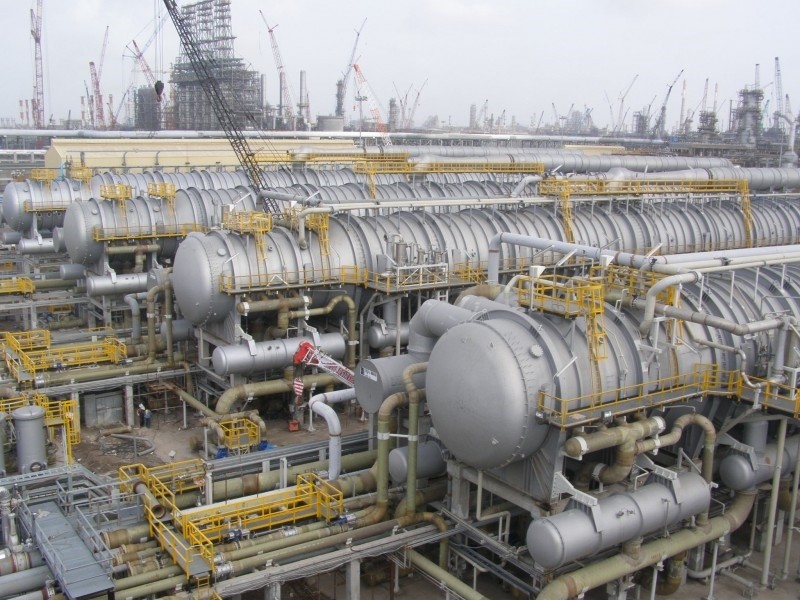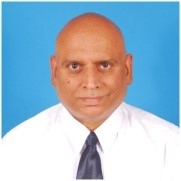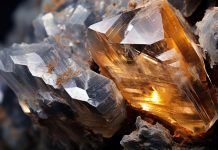Energy particularly fossil fuel is expensive and not readily available. India has to import over 80% of its energy requirements. The cost of primary energy (coal, oil & gas) fluctuates in the international market and over the years keeps on increasing, specifically when one accounts for the significant costs to society (-externalities such a public health and environmental damage -) not reflected in the direct cost of the fuel itself.The price of imported coal also follows this trend. It is therefore important that from a given source of primary energy (coal, oil, gas) maximum usable energy be obtained. This paper focus on how one can improve overall cycle efficiency of a simple Rankin cycle.

Figure 1: Price of Brent crude oil
In order to optimally utilize the primary energy, it is important that as much energy in useful form be converted. Sometimes in our goals for maximum efficiency, we do not look at other products that may be produced: through a small sacrifice in one form, we may be able to increase the overall cycle efficiency. For example in power production, when a condensing turbine is used the following efficiencies are obtained.
| Typical Thermal Power Plant Efficiencies | ||||
| Type | Efficiency | Operating Condition | ||
| Inlet | Condensing end | |||
| Sub Critical Thermal plant | 33-38% | 135-170 ata , 550-570˚C | 0.098 ata 45 oC | |
| Super Critical Thermal Plant | 42% | >220 ata, 600˚C | 0.098 ata 45 oC | |
| Ultra Super Critical | 45-48% | >300ata, 600˚C | 0.098 ata 45 oC | |
How primary energy is utilized in a power plant

We see that the useful energy for a sub critical small (60 – 120 MW) power plant is only 34%, with most losses rejected in the condenser. Typically a condensing steam turbine would condense steam at around 0.1 ata (45oC) under Indian conditions. However in-order to utilize this energy lost through condensation we would need another application that operates at close to these conditions. When we look at a Low Temperature Multi effect Distillation unit, the same operates at a temperature of 72oC or 0.32 ata. The Gross Operating Ratio (GOR) at this mode of operation is 8, i.e. One ton of steam will produce 8 m3 of desalinated water. However this means that if MED unit is directly coupled to the turbine, the steam turbine will discharge at a back pressure greater than 0.32 ata. In another mode of operation if the MED receives steam at say 2 ata then it operates under the Thermo Vapor Compression (TVC) mode the GOR improves to 11. In this case we may use an extraction at point greater than 2.0 ata. Now let us consider an extraction turbine with an extraction point at say 3.0 ata (to account for piping losses as MED unit might be placed a bit afar). A large scale TVC MED unit of say 1042 m3/hr (25 MLD) would require about 95 TPH of steam.

Line diagram for turbine using back pressure as well as extraction steam.

Evaluation of energy cost of steam generation using extraction steam:
| Particulars | Value | Units |
| Enthalpy of Steam at 3ata saturated | 2724.9 | KJ/Kg |
| Enthalpy of Steam at 0.1 ata saturated | 2629.1 | KJ/Kg |
| Energy theoretically available for electricity generation | 95.8 | KJ/Kg |
| Energy available in 95 TPH | 9,101,000 | KJ/Hr |
| Potential power generation considering 90% turbine isentropic efficiency | 2,275 | KW |
| Energy generated in One Hour | 2,275 | kWh |
| if energy priced at retail | 10 | Rs/kWh |
| Potential Revenue | 22,750.00 | Rs/hr |
| Contrast with water generation for 95 TPH steam 3 ata extraction | ||
| Water generated | 1,042 | M3/hr |
| Steam cost of water generation | 21.83 | Rs/M3 |
TVC MED or MED is a robust desalination process and consistently gives high purity water irrespective of sea water input conditions. A comparative on TVC MED Units versus SWRO units is illustrated by the following table.
| Pre Treated Sea Water Parameter | Criteria (mg /L) for
SWRO based Desalination |
Criteria (mg /L) for
Thermal (MED/MVC) Desalination |
| TSS | < 0.5 | < 15 |
| Oil & Grease | <0.1 | < 1 |
| Turbidity | < 5 SDI at all times | < 10 NTU |
| BOD | Non Detect | < 10 |
| COD | <10 | <20 |
| TOC | <3 | |
| Fe+Mn | Non Detect | <0.3 |
| Cu, Hg | Non Detect | ≤0.05 |
| Silica (Total) | Non Detect | < 10 |
| Other Heavy Metals | Non Detect | |
| Total Alkanilty | ≤ 120 | |
| Bicarbonate | ≤ 140 | |
| H2S | Non Detect | < 0.1 |
| TDS | Output dependent on inlet TDS | 41,000 ppm plus |
Comparison of other parameters is as follows:
| TECHNOLOGY | MEMBRANE | THERMAL | |
| OPERATING TEMPERATURE | Ambient | Low Temp | |
| Process | SWRO | TVC – MED | |
| Electricity Consmption | kWh/m3 | 4-6 | 1.0-1.3 |
| Motive Steam Pr. | ata | N/A | 0.5 to 3 |
| Eq, Thermal Energy relative to Elec Cost | N/A | 40% | |
| Total Equivalent energy Consumption | kWh/m3 | 4-6 | 3.8-4.5 |
| Product Quality | Ppm TDS | 400 Ppm (Single Pass)
<10 ppm (Double Pass) |
<10 ppm all conditions |
| Minimum Intake requirements | Clean water from deep sea intake | Shallow ok | |
| Fully Automatic Operation | Possible, but risky | Yes | |
| Tolerance to Operator faults | No | Yes | |
| Tolerance to variation in sea water quality | No | Yes | |
| Req. for sophisticated pre treatment | Yes | No | |
| Chemical + Anti scalant consumption | High | Low | |
| Maintenance Requirements | High & unpredictable | Low | |
| Cost of Spares as % of Capex | ~2% | <0.5% | |
| Civil Works Maintenance | 0.5% | <0.1% | |
| Failure potential if corrosion occurs | High | Low | |
| Periodic Cleaning | 3 months / online | 24 months | |
| Skilled Manpower requirements | High | Low | |
| Annual Availability | 92% | 98+% | |
| Reliability | Medium | Very High | |
| Plant Life Expectancy | 15 years | 30 + years |
RIL Jamnagar: 230 MLD MED based desalination.

Thus we see that energy cost of generation of desalinated water is minimal, and is much more robust and reliable compared to SWRO systems. Industry leaders like Reliance Industries are using this system since 1998 and Industries that have access to sea can thus be self reliant for their electricity and water needs. It may also be noted that Ministry of Environment and Forests now recommends desalinated water for industries that have access to sea, and a proposal for a captive power plant coupled with a desalination unit stands a much better chance of sailing through rather than a captive power plant alone.
About the Authors:
- Tehmton Toorkey:
 Holds a B. Tech in Chemical Engineering from IIT Madras @ Chennai, a M.S. in chemical engineering and M B A in finance from University of Akron and has worked with EPA, USA, Tata Power, Hinduja National Power Corporation and is currently with Technochem Agencies (Pvt) Limited as Consultant in the Engineering, Projects & Technical Consultancy Division of Technochem Agencies (Bombay) Pvt Ltd
Holds a B. Tech in Chemical Engineering from IIT Madras @ Chennai, a M.S. in chemical engineering and M B A in finance from University of Akron and has worked with EPA, USA, Tata Power, Hinduja National Power Corporation and is currently with Technochem Agencies (Pvt) Limited as Consultant in the Engineering, Projects & Technical Consultancy Division of Technochem Agencies (Bombay) Pvt Ltd
- Sriram Kulkarni: Holds a B. Tech in Chemical Engineering from IIT Kanpur, a M. S. in Chemical Engineering & MBA from State University of New York, Buffalo and is Director of TechnoChem Agencies (Bombay) Pvt Ltd (TCA). TCA is exclusive representative of inter alia IDE-Tech, and ENER-T in India. Mr. Sriram Kulkarni is also on the executive committee of Indian Desalination Association. Mr. Sriram Kulkarni has been part of the largest desalination projects executed in India using the advanced desalination technologies in all modes namely TVC-MED, MVC and SWRO projects.
- Yehuda Harats: Mechanical Engineer with over 35 years’ experience in the development, construction and operation of utility scale concentrated solar power plants, renewable energy and clean water projects. Founder and Chairman of Ener-t International Ltd.
Acknowledgements:
- Energy graph. com
- IDE – Tech, Israel MED & SWRO process details
- X- steam tables by Magnus Holmgren as per IAPWS IF-97http://www.x-eng.com































